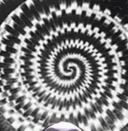
Boris Karloff is recognized as one of the true icons of horror cinema.
Boris Karloff was born William Henry Pratt on November 23, 1887 in London, England. His father was Edward John Pratt, Jr. and his mother was Eliza Sarah Millard.
His paternal great aunt was Anna Leonowens, whose tales about life in the royal court of Siam (now Thailand) were the basis of the musical The King and I.
Karloff's first goal in life was to join the foreign service. However, he turned to acting upon immigrating to Canada in 1909 where he changed his name to "Boris Karloff".
In 1912, while appearing in a play in Regina, Saskatchewan, a devasting tornado hit killing 28 people. He volunteered as a rescue worker and also organized a concert that raised funds for the city.
Once Karloff arrived in Hollywood, he made dozens of silent films but work was sporadic, and he often had to take up manual labor, such as digging ditches and driving a cement truck, to pay the bills.
Karloff's first film was The Dumb Girl of Portici (1916). Some of his silent films include The Lightning Raider (1919), The Prisoner (1923), Cheated Hearts (1921), The Woman Conquers (1922), The Prairie Wife (1925) and Two Arabian Knights (1927).
He even had an uncredited role as a Union General in Buster Keaton's classic film The General (1926).
In 1928, Boris Karloff appeared in his first talkie, Behind that Curtain.
From 1928 to 1931, he appeared in such films as The Utah Kid (1930), Cracked Nuts (1931) and Young Donovan's Kid (1931).
In 1931, at the age of 44, Boris Karloff got his big break in a role that would forever be associated with his name, Frankenstein. He would resume his role in Bride of Frankenstein (1935) and Son of Frankenstein (1939). In 1958, in Frankenstein 1970, he would play Dr. Baron Victor von Frankenstien II, the grandson of the original inventor.
In Son of Frankenstein (1939), he also was the demented Igor.
Boris Karloff also appeared in such films as The Mummy (1932), Scarface (1932), The Black Cat (1934), The Walking Dead (1936), Devil's Island (1939), Black Friday (1940), The Body Snatcher (1945), The Secret Life of Walter Mitty (1947), Abbot and Costello Meet the Killer, Boris Karloff (1949), and Abbot and Costelle Meet Dr. Jeckyll and Mr. Hyde (1953).
Boris Karloff's final film was The Incredible Invasion (1971) which was released after his death.
In addition to Karloff's sucessful film career, he also had a successful career on Broadway. He appeared in the Broadway productions of Peter Pan, Arsenic and Old Lace, The Shop at Sly Corner and The Lark. He was nominated for a Tony award for The Lark.
Boris Karloff also appeared on such classic television shows as The Red Skelton Show, Playhouse 90, General Electric Theatre, Route 66, The Wild Wild West, and I Spy.
Karloff was bow-legged had a lisp, and stuttered as a young boy. He conquered his stutter, but not his lisp, which was noticeable all through his career.
In contrast to the sinister characters he played on screen, Karloff was known in real life as a very kind gentleman who gave generously, especially to children's charities. Every year beginning in 1940, Boris dressed up as Santa Claus and handed out presents to physically disabled children at a Baltimore hospital.
Boris Karloff was also a charter member of the Screen Actors Guild and was outspoked regarding hazardous working conditions on the sets.
Boris Karloff was married six times and had one daughter by his fifth wife.
Boris Karloff has two stars on the Hollywood Walk of Fame, one for television and one for motion pictures.
Boris Karloff died on February 2, 1969 at the age of 81 due to complications of emphysema.



























 Just For Fun:
Just For Fun:










